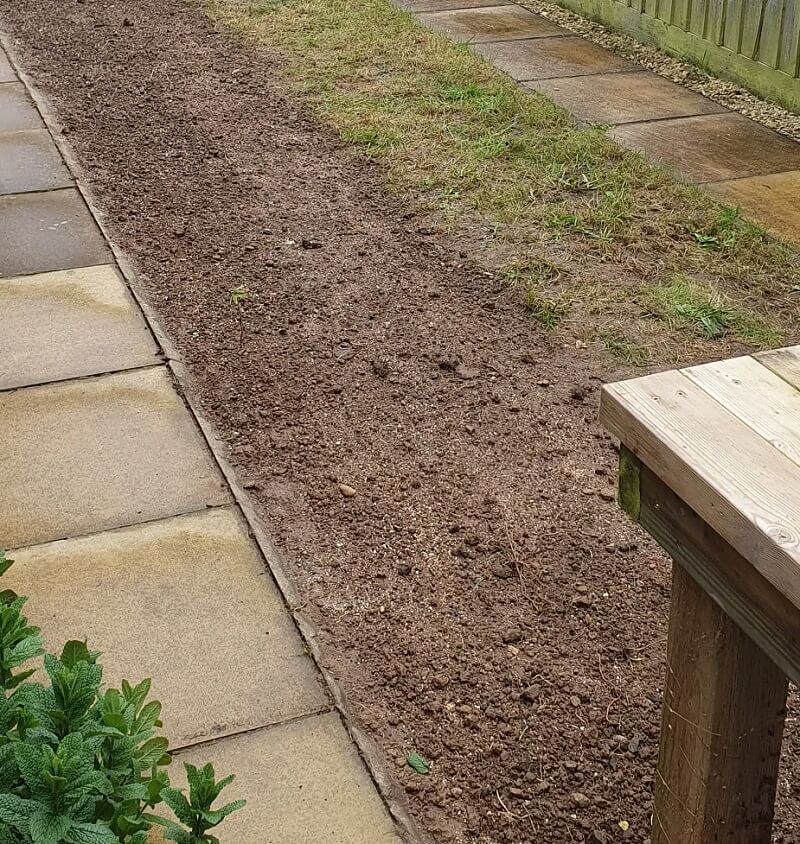When we think of a classic suburban home, images of a green yard in front of a two-story home with a few cars parked in the driveway near a tree or two come to mind. But, with the stereotypical home and yard, we could be missing so much beauty and native flourishing.
In a Reddit post on the subreddit r/NoLawns — a community devoted to alternative lawns, particularly native plants, and conservation — the original poster shared a look at the incredible transformation in their yard.


The post, titled "Before and after update!," showcased the transformation of the OP's backyard space from dirt to blooming garden.
The before picture shows a small patch of dirt with a little grass growing in their fenced yard. The after photos show a lush native garden with a wide variety of flowers and even visits from a bee and a gatekeeper butterfly.
In the garden, the OP planted Thompson & Morgan flowers, wildflower seeds, cornfield annuals, woodland mix, and a few seeds they foraged with their daughter. The Redditor also expressed their disappointment in the comments that about half of the garden was non-native plants and looked forward to being more careful choosing plants in the future.
Traditional lawns for homes can be devastating to the ecosystem. Sometimes, grass is planted that can be non-native to the ecosystem, which kills native plants.
Pesticides in lawn care can harm wildlife and have even been linked to chronic diseases. Lawns also require a lot of water to stay healthy, up to 1.5 inches a week, according to Forbes. This could take needed water away from wildlife and agriculture, especially in times of drought.
Planting a native plant lawn can have numerous benefits for you and the environment. Native plant lawns can restore habitats and provide vital food to wildlife, including birds, bees, moths, and mammals.
Proper food for pollinators such as bees is vital to our food supply, as they pollinate much of our agricultural produce.
Native lawns also require much less maintenance, including using less water, reducing strain on local water supplies.
Even a partial native lawn could help you reap the benefits of less maintenance and lower water bills while providing a haven for native wildlife and producing a beautiful garden, just like the garden in the OP's yard.
"That's beautiful, congratulations!" commented one user.
"Ah I can spot borage," another commenter said. "It's loved by hummingbirds. I hope you get some great migratory visitors with those blooms."
Join our free newsletter for easy tips to save more and waste less, and don't miss this cool list of easy ways to help yourself while helping the planet.









